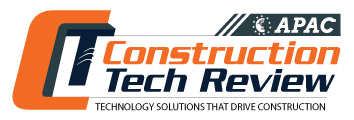THANK YOU FOR SUBSCRIBING

Why Ignoring Environmental Flows Could Cost You Millions?
Jimmy Jia, Venture Partner, ESG, Pi Labs

 Jimmy Jia, Venture Partner, ESG, Pi Labs
Jimmy Jia, Venture Partner, ESG, Pi LabsJimmy Jia is a seasoned entrepreneur, innovator and strategist in sustainable finance and ESG. He is the ESG Venture Partner at Pi Labs, Europe’s leading PropTech VC firm. With bachelors and master’s degrees from MIT in materials science and engineering, he earned an MBA and is now pursuing a DPhil at Oxford. His research develops valuation tools to guide capital deployment into climate-resilient infrastructure and environmental decision-making.
Jia believes that focusing on sustainability doesn’t mean sacrificing business growth. He points out that real impact comes from understanding how environmental risks and resources affect a company’s success, especially in real estate. For startups, he stresses the importance of balancing making money with doing good.
Career Evolution: From Engineer to ESG Strategist
I began my career as a materials engineer, with a focus on microelectronics. It gave me a foundational knowledge of how solar panels worked. Then, after an MBA, I started a business in energy management of commercial real estate. That gave me the experience of how to run a company, from sales, operations, to product development and listening to customer feedback. I think sales was the most important skill of my career. As I learned from my customers, I realised that one challenge was to unlock the flow of capital investments into energy efficiency. CFOs were interested in saving money, but had a hard time connecting the dots to how energy efficiency could help them save money. I don’t blame them though, as a lot of the calculations of energy efficiency ROI had assumptions that were opaque to CFOs. So I shifted my business in to providing capital planning for energy strategies. In essence, if a CFO was facing a capital upgrade decision, we would advise the CFO how to structure the deal with blended finance options that would make the most sense. That way, lower energy devices were installed and the CFO felt like they were in control.
“A good (E) business is one that considers the risks of environmental flows in the investment choice”
When I decided to move to the UK, Pi Labs was looking for a head of ESG. As an entrepreneur myself, it was a good fit.
Embedded Sustainability: From intent to infrastructure
I like to say that the real estate sector is the ESG sector. Real estate consumed 40% of global resources (E) for the creation of social spaces (S). How we govern the investments (G) can make all the difference.
Early-stage investments themselves rarely have an environmental footprint, but their product could have a massive impact on their customer’s footprint. I focus on understanding if ESG-related features and benefits are integrated into the product natively, or whether it’s an optional value-add of delivering the product. The sector rapidly evolves, but the fundamentals of resource management still remains the same. Buildings need wood, concrete, steel, aluminum, copper, so on and so forth. Technology can help us make better materials choices.
Core Dilemma: ESG can’t replace revenue
The key challenge of any new venture is revenue, sales and traction. I firmly believe that those attributes needs to come ahead of everything else, including ESG. Thus the challenge is, even for an ESG-related company, to be focused on revenue and sales, without getting too focused on the ESG features and benefits of their products.
Early-Stage Focus: Growth and ESG go hand-in-hand
I don’t believe the two are at odds with each other, frankly. ESG gives additional constraints for where to look for innovation and build in barriers to entry. After all, a financially profitable company that has bad ESG attributes can be competitively replaced with a financially profitable company that has good ESG attributes. Therefore, I would argue that good ESG stewardship is part and parcel of market fit.
Key Wisdom: Let resource risks shape your strategy A good (E) business is one that considers the risks of environmental flows in the investment choice. Energy, water, carbon, air and other flows can be used to identify costs and risk exposures for startups, even if they’ve yet to scale up. This is true for founders who are finding market niches as well as investors who are putting capital behind such founders.
Read Also
Bridging AI and Construction: How Model Context Protocol Is Transforming AEC Workflows
Bringing Information Security to the Core
Data-Driven Approach For More Efficient And Low-Emission Infrastructure Construction And Maintenance
Social Value: Investing in the Legacy of our Projects
Opportunities Offered By Satellite Technology And Low Earth Orbit To The Construction Industry
Bridging Al and Construction: How Model Context Protocol is Transforming AEC Workflows

 Copyright © 2025 All Rights Reserved | by:
Copyright © 2025 All Rights Reserved | by: Construction Tech Review
| Subscribe | About us | Sitemap| Editorial Policy| Feedback Policy










